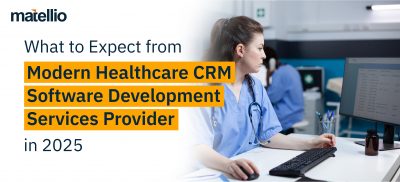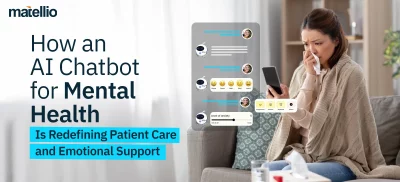
Attention, healthcare leaders! If you’re not using descriptive analytics in healthcare, you’re missing out on a massive opportunity to solve some of your biggest pain points. Imagine running your facility with crystal-clear insights into patient care, hospital operations, and cost management. Sounds great, right? Well, that’s what descriptive analytics can do for you.
Let’s face it—hospitals and clinics are drowning in data. From patient records to billing and inventory, managing it all can feel overwhelming. But what if you could turn all that data into something useful, something that helps you make better decisions, cut costs, and improve patient care? That’s exactly what descriptive analytics can do. It’s the key to unlocking insights you never knew you had.
So, what is descriptive analytics? In simple terms, it helps you understand what has already happened. It takes all your historical data and breaks it down into meaningful patterns and trends. The result? A clearer picture of your facility’s performance, patient outcomes, and areas for improvement. And the best part? It’s not complicated—you can start using it today to make a huge impact.
Curious how? Let’s dive deeper into the problems you’re facing and how the use of descriptive analytics in healthcare can solve them. Spoiler alert: you’ll wonder how you ever managed without it!
What is Descriptive Analytics
So, what is descriptive analytics exactly, and why is it making waves in healthcare? In simple terms, descriptive analytics is all about looking at the past to understand what happened. It takes historical data—like patient records, treatment outcomes, and operational data—and breaks it down into patterns, trends, and insights.
It’s like a detailed report card for your healthcare facility, showing you what’s been working, where things went wrong, and how you can improve.
But here’s the best part: it’s not complicated! You don’t need to be a data scientist to understand how descriptive analytics in healthcare works. It simply analyzes the data you already have and presents it in a way that helps you make smarter decisions.
For example, with descriptive analytics in healthcare, you can easily see which departments are overbooked, how long patients are waiting for treatments, or which treatments have had the best outcomes. It’s not about predicting the future—that’s what predictive analytics does. Instead, descriptive analytics helps you make sense of past data to improve today’s operations.

Think of descriptive analytics in healthcare as your roadmap to understanding where your facility stands and how to move forward. And with tools like healthcare analytics software and data consultation services, you can easily integrate this into your everyday operations.
Pain Points in Healthcare That Descriptive Analytics Can Solve
Let’s talk about the real struggles healthcare owners face every day. Running a healthcare facility isn’t just about treating patients; it’s about managing massive amounts of data, making quick decisions, and doing it all while keeping costs under control. If this sounds familiar, don’t worry—you’re not alone. But what if I told you that descriptive analytics in healthcare could be the ultimate solution to these challenges?
1. Overloaded with Data, But Lacking Insights
Hospitals and clinics collect mountains of data daily—patient records, treatment outcomes, billing information, inventory, and the list goes on. But most facilities struggle to make sense of this data. It’s scattered across different systems, difficult to analyze, and often just sits there, unused. With descriptive analytics, you can turn this raw data into actionable insights. It helps you understand what’s going on by showing patterns and trends you might be missing.
2. Inefficiencies and High Operating Costs
Let’s face it, inefficiencies can bleed a hospital dry. Whether it’s delays in patient care, wasted resources, or costly mistakes in billing, inefficiencies affect both the bottom line and patient satisfaction. The use of descriptive analytics in healthcare helps identify these bottlenecks by showing you exactly where things are going wrong. Imagine knowing which departments are slowing down operations or which processes are unnecessarily costing you money. With this knowledge, you can make informed decisions to cut costs and improve efficiency.
3. Struggles with Patient Outcomes
Improving patient outcomes is at the heart of healthcare, but it’s not always easy to know what’s working and what’s not. That’s where descriptive analytics use cases come in. By analyzing past patient data, you can see which treatments have been effective and where adjustments are needed. This data-driven approach ensures better care and more consistent patient results.
4. Managing Resources and Staffing
Healthcare facilities often struggle with managing resources like staff and medical supplies. Too few staff members during busy hours can lead to burnout, while overstaffing during slower periods leads to wasted resources. Descriptive analytics in healthcare can help by analyzing historical data on patient inflows and staffing levels. This allows you to plan better and allocate resources more efficiently, leading to cost savings and smoother operations.
By adopting descriptive analytics as part of your digital strategy, you’re not only solving these pain points but also preparing your facility for the future. From improving patient care to cutting operational costs, the benefits are endless.
Also Read: Diagnostic Analytics – Solving Your Most Challenging Problems
Ready to Transform Your Organization with Descriptive Analytics? Let’s Begin with a Free 30-minute Consultation! Do you know that as of 2023, the healthcare analytics market was valued at $43.08 billion, and it’s forecasted to reach $167.04 billion by 2030, growing at a CAGR of 21.4%? Well, if you’re not all-in on descriptive analytics yet, you’re essentially performing surgery with a blindfold on. It’s time to take those blinders off and see the game-changing benefits staring you right in the face. Here’s the raw truth about what descriptive analytics in healthcare can do for your organization: Want to save money and boost efficiency? Hospitals using descriptive analytics in healthcare have seen operational costs drop by up to 30%! By analyzing patterns in staffing, patient flow, and resource use, you can cut down on wasted time, energy, and supplies. Imagine what you could do with those extra funds—invest in better equipment, hire more staff, or improve patient care. This is more than just improving numbers—it’s about delivering better care. Healthcare providers using descriptive analytics have seen improvements of 15-20% in patient outcomes. With data-driven insights, you can tailor treatments to each patient, prevent complications, and reduce hospital stays. That means better results for your patients and a boost in your facility’s reputation. Is your waiting room packed with frustrated patients? Descriptive analytics can cut wait times by as much as 50%, transforming your operations from chaotic to smooth. By analyzing patient flow and appointment data, you can optimize schedules and ensure resources are available when patients need them most. Readmissions are costly and frustrating for both patients and healthcare providers. With descriptive analytics in healthcare, you can reduce readmission rates by up to 25% by identifying patterns in patient data that predict who is most likely to return. Preventive care and early interventions save both lives and money. Running low on essential medical supplies or overstocking what you don’t need? Descriptive analytics helps optimize inventory management, saving up to 20-30% in costs. You’ll have just what you need, when you need it, reducing waste and ensuring patient care isn’t compromised. Healthcare fraud is costly, but descriptive analytics can help catch it before it gets out of hand. Some organizations using this technology have reduced fraud by up to 60%! By detecting unusual patterns in billing or claims data, you can protect your facility’s finances and reputation. Tired of understaffed shifts and overworked employees? Descriptive analytics in healthcare can optimize your workforce scheduling, ensuring you have the right staff at the right times. Happy staff means better care for your patients—and fewer overtime expenses for you. With descriptive analytics, healthcare facilities can spot high-risk patients before their conditions worsen. Early interventions have helped reduce complications by 30%, ensuring patients receive care before it becomes critical. This not only improves outcomes but also reduces the strain on your emergency services. Want to attract more patients? Descriptive analytics enables precision-targeted marketing campaigns, lowering patient acquisition costs by 25%. By analyzing data on demographics and patient behaviors, you can focus your efforts on the right audiences, increasing your outreach and ROI. Navigating healthcare regulations can be overwhelming, but descriptive analytics helps track compliance metrics, reducing issues by 40%. By keeping you ahead of regulatory changes and ensuring accurate record-keeping, it minimizes the risk of costly penalties. So, what’s it going to be? Are you ready to transform your organization into a data-driven powerhouse? Or are you content watching others revolutionize healthcare while you’re stuck in the past? Schedule a free 30-minute consultation with our experts to make an informed decision! Implementing descriptive analytics in healthcare can greatly streamline key areas in your facility, helping you improve operational efficiency, patient care, and financial management. Let’s explore some descriptive analytics use cases that can make a real impact: Descriptive analytics allows healthcare providers to analyze historical patient data and treatment outcomes, enabling more personalized care plans. By understanding what has worked in the past, you can make better decisions about patient treatments and reduce unnecessary procedures. Read More: Discover how AI in Health Informatics is transforming data-driven care, enabling smarter decisions and seamless healthcare delivery. Healthcare facilities often struggle with inefficiencies in staffing, resource allocation, and patient flow. Descriptive analytics in healthcare can analyze past data to help you optimize these areas, ensuring that your facility runs more smoothly and cost-effectively. Efficiently managing medical supplies and staff can save a healthcare facility from wasting both time and money. Descriptive analytics in healthcare can reveal patterns in resource usage and staff allocation, helping you plan better for the future. Descriptive analytics helps healthcare facilities spot financial inefficiencies, such as billing errors or overuse of resources. By using historical data to guide your decisions, you can cut unnecessary costs while maintaining high-quality care. Staying compliant with healthcare regulations and managing risks effectively is crucial for any facility. Descriptive analytics in healthcare helps track compliance metrics and flag potential risk areas before they become major problems. When combined with AI integration services, descriptive analytics can even predict risk factors, allowing for earlier interventions and improved patient safety. Ready to tap into the power of descriptive analytics in healthcare? Great choice! Now, let’s break down how to get started in a way that’s both practical and impactful. Implementing analytics doesn’t have to be a daunting task, especially with the right steps and a reliable partner to guide you. Here’s how you can seamlessly integrate descriptive analytics into your healthcare facility for better patient outcomes, operational efficiency, and cost savings with Matellio. The first step is to take stock of your existing data. Many healthcare facilities have large amounts of data—patient records, staff schedules, billing—but struggle to make sense of it all. Is your data organized and accessible? If not, your analytics will suffer. It’s time to assess and clean up your data. This foundation is key to building an effective analytics system that uncovers valuable insights and improves decision-making. Healthcare analytics software can streamline the integration of this data, ensuring you have access to all the critical information in one place. Next up? You don’t have to tackle this alone. Partnering with a trusted healthcare software development company like Matellio is essential to ensure smooth integration and implementation of descriptive analytics in healthcare. With an expert team, you can turn messy data into powerful insights. Matellio offers custom healthcare software development and data consultation services that will not only implement descriptive analytics but also handle security, compliance, and real-time reporting. We can help you leverage AI integration services to ensure your analytics system doesn’t just analyze the past but sets you up for predictive and prescriptive analytics in the future. Data quality is everything when it comes to descriptive analytics. You can’t base your decisions on inaccurate or incomplete information. That’s why it’s crucial to ensure your data is clean, consistent, and secure. Plus, don’t forget about compliance with regulations like HIPAA. The use of descriptive analytics in healthcare relies heavily on data accuracy, and maintaining secure, compliant systems ensures your patients’ privacy is protected at all times. No matter how sophisticated your analytics system is, it won’t be effective unless your team knows how to use it. Training your staff on how to interpret and act on the insights from descriptive analytics is critical for success. Once your team knows how to use the insights provided by descriptive predictive and prescriptive analytics in healthcare, you’ll see improvements in every area, from patient care to operational efficiency. Don’t feel the need to transform your entire facility overnight. Start with a pilot project in one department, such as improving patient flow in the emergency room or optimizing staff scheduling. This allows you to gather insights and adjust your approach before scaling across the entire facility. This approach helps your organization get comfortable with analytics while minimizing risk. Custom enterprise software development can help automate these insights across departments, improving efficiency as you scale. Once your descriptive analytics system is up and running, continuous monitoring is crucial. You want to ensure the system is delivering valuable insights and that you’re staying ahead of emerging trends. Additionally, innovations like machine learning solutions can take your analytics to the next level. With digital transformation services and ongoing support, you can ensure your healthcare facility is always equipped with the latest technologies to maximize efficiency and patient care. Also Read: How to Develop Healthcare Analytics Software? Need to Know the Cost of Implementing Descriptive Analytics? Fill Out Our Form to Get a No-Obligation Quote! At Matellio, we don’t just offer solutions—we deliver transformation. With our extensive experience in custom healthcare software development, we guide you through the entire process of adopting descriptive analytics in healthcare. From data integration to system deployment, we handle the complexities so you can focus on improving patient care and optimizing operations. Here’s how we help: Matellio is your go-to partner for turning complex data into actionable insights, helping you streamline operations, cut costs, and improve patient outcomes. Ready to transform your healthcare facility? Let’s get started today! Descriptive analytics involves analyzing historical healthcare data to uncover trends and insights, helping providers improve patient care and streamline operations. By analyzing past treatment data and patient records, descriptive analytics helps healthcare providers identify the most effective treatments and personalize care plans for better outcomes. Descriptive analytics identifies inefficiencies in resource use, staff allocation, and patient flow, allowing facilities to optimize operations and cut unnecessary expenses. A trusted partner ensures a smooth, secure, and compliant integration of descriptive analytics into your healthcare system, maximizing the potential benefits without the hassle. Yes, it helps monitor compliance with healthcare regulations and predict potential risks, ensuring safer patient care and reducing legal liabilities. Why You Can’t Ignore Descriptive Analytics Anymore
Slash Operational Costs Like a Scalpel
Supercharge Patient Outcomes
Turbocharge Your Efficiency
Predict and Prevent Readmissions
Inventory Management on Steroids
Fraud Detection That Actually Works
Staff Scheduling That Makes Sense
Risk Prediction That’s Actually Predictive
Marketing That Hits the Mark
Compliance Made Easy(ier)
Areas You Can Streamline with Descriptive Analytics Use Cases

 Patient Care Optimization
Patient Care Optimization
 Operational Efficiency
Operational Efficiency
 Resource Management
Resource Management
 Cost Reduction
Cost Reduction
 Compliance and Risk Management
Compliance and Risk Management
How to Implement Descriptive Analytics in Healthcare Facilities
 Assess Your Current Data Systems
Assess Your Current Data Systems
 Partner with a Trusted Healthcare Software Development Company
Partner with a Trusted Healthcare Software Development Company Ensure Data Quality and Security
Ensure Data Quality and Security
 Train Your Team
Train Your Team
 Start Small, Scale Big
Start Small, Scale Big
 Monitor, Optimize, and Innovate
Monitor, Optimize, and Innovate
How Can Matellio Help You Implement Descriptive Analytics in Healthcare
FAQ’s
Q1. What is descriptive analytics in healthcare?
Q2.How does descriptive analytics improve patient outcomes?
Q3. How can descriptive analytics reduce operational costs?
Q4.Why should I partner with a healthcare software development company for descriptive analytics?
Q5. Can descriptive analytics help with compliance and risk management?


